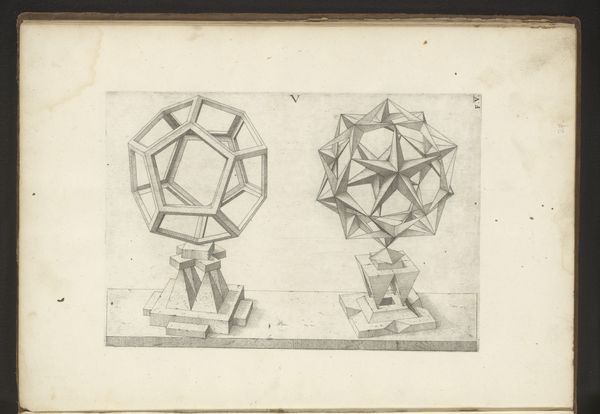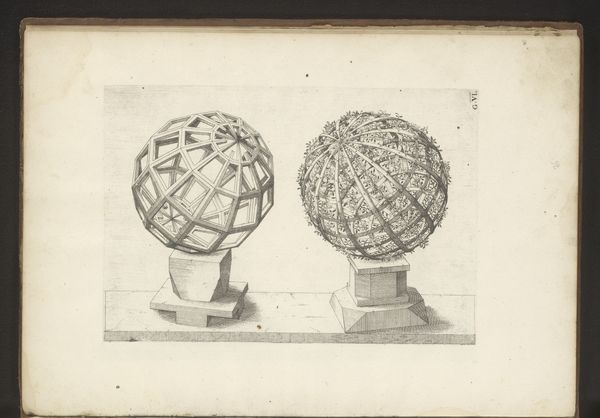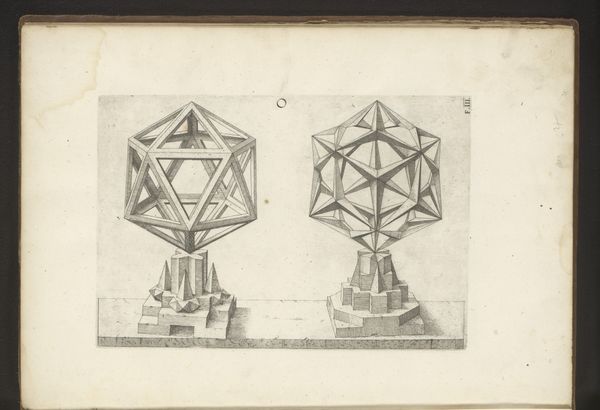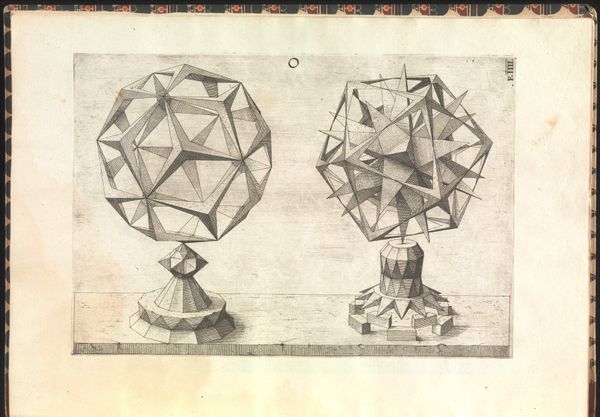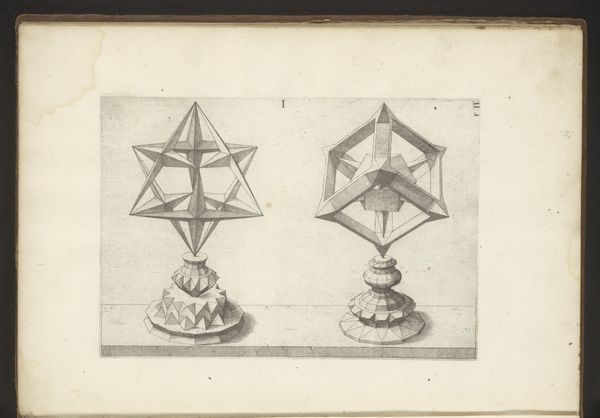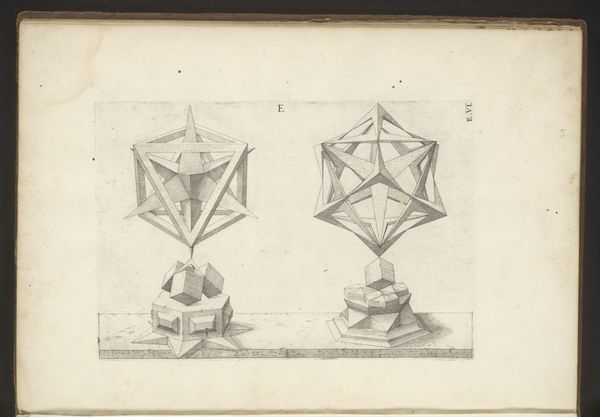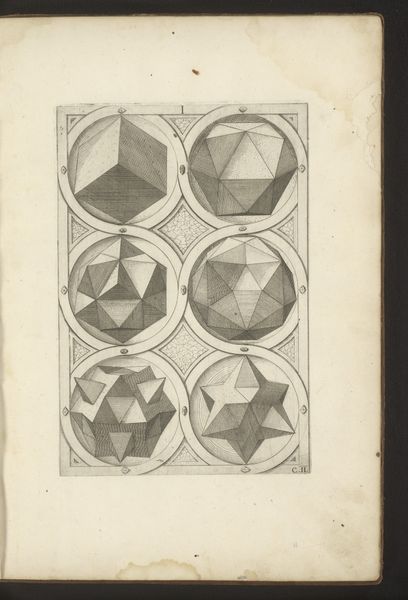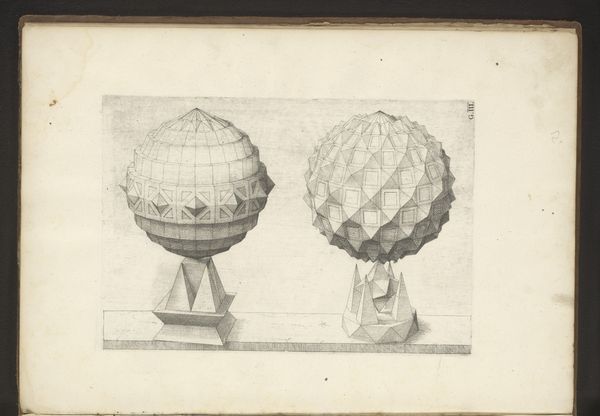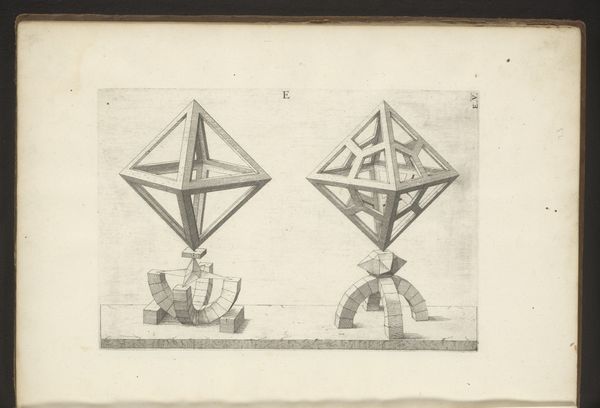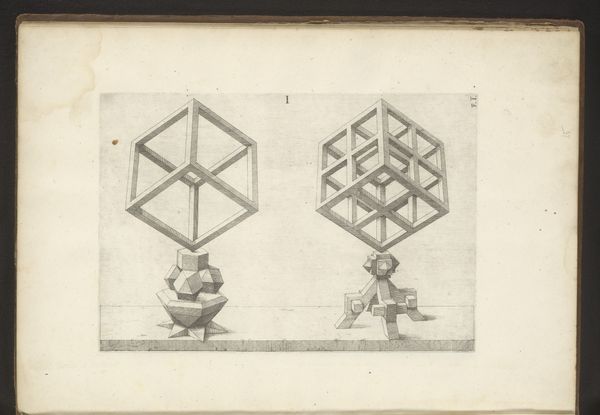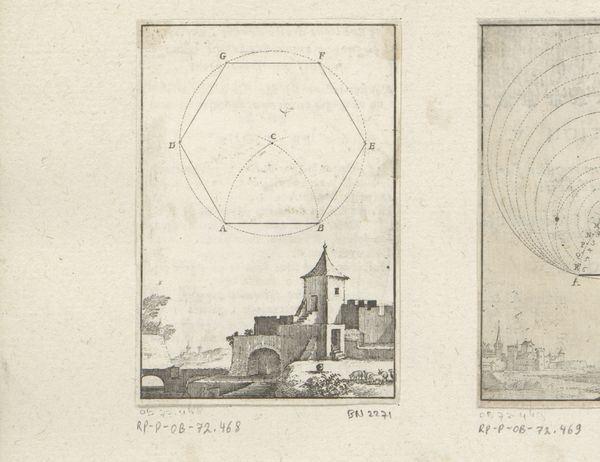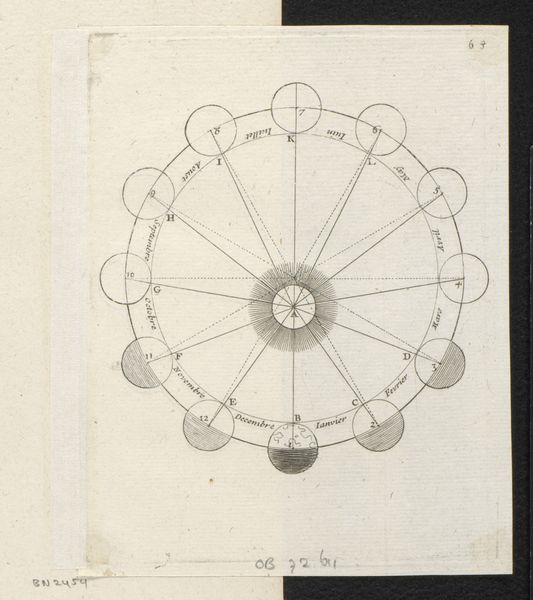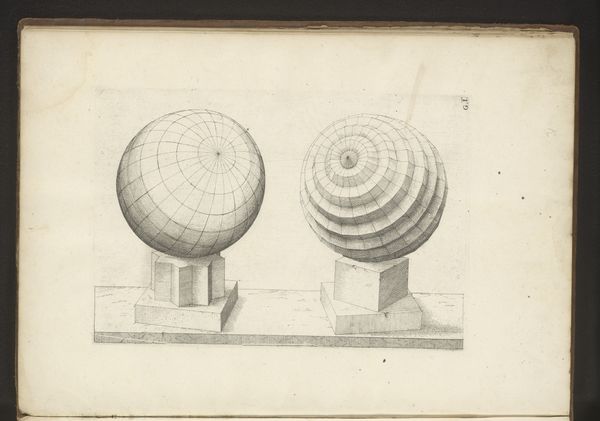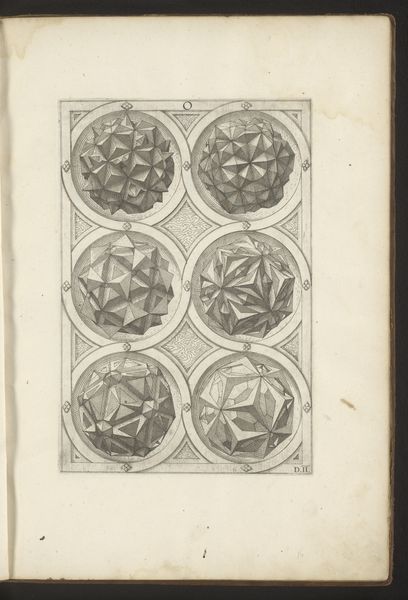
drawing, print, intaglio, pen, engraving
#
drawing
# print
#
intaglio
#
figuration
#
11_renaissance
#
coloured pencil
#
geometric
#
pen
#
engraving
Dimensions: height 260 mm, width 177 mm
Copyright: Rijks Museum: Open Domain
Editor: Jost Amman's "Two Polyhedra with an Icosahedron as a Starting Point," made around 1568, is just mesmerizing. The intricacy of the geometric shapes is so captivating, but I find myself wondering about the purpose of these images. What exactly am I looking at? Curator: This print reveals the increasing interest in mathematics and perspective during the Renaissance, fueled by a revival of classical knowledge and its application in art and architecture. How do you think the printing press impacted the spread of ideas like those represented in this image? Editor: I suppose it made these ideas more accessible to artists and scholars outside the traditional elite circles of patronage. But were these kinds of images purely academic, or did they have other implications for the broader culture? Curator: These polyhedra represent an ordered universe, reflecting a belief in underlying mathematical harmonies. Artists also used geometry for idealized depictions of the human body and city planning. Were they neutral? Absolutely not. Think about the implications for architecture and engineering of having standardized patterns widely available, and what would mean for a society building the kind of cities the Renaissance desired. Editor: So, these images were tools for shaping a new kind of world, not just abstract exercises. Did people at the time readily understand the mathematical principles being presented? Curator: The imagery was likely appreciated on different levels, by experts and more general audiences, making it a crucial element in visual education for a society rebuilding itself from a very messy century. Disseminating a sense of order was crucial to artists and artisans in that era. Editor: I never considered the link to broader societal changes before! It’s fascinating to think about how seemingly abstract images were really instruments for cultural transformation. Curator: Exactly. And reflecting on their continued resonance with contemporary audiences as intriguing mathematical constructs and exquisite aesthetic objects adds another layer to the ongoing historical dialogue.
Comments
No comments
Be the first to comment and join the conversation on the ultimate creative platform.
